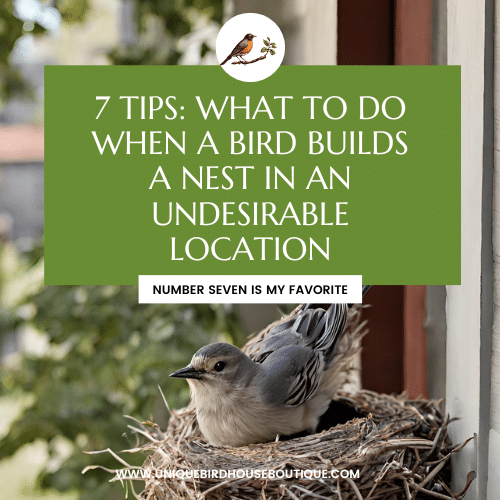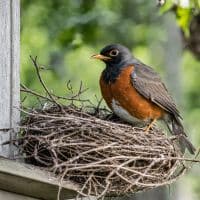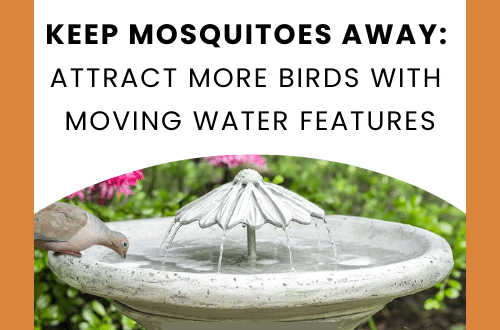
Seven Tips: How to Handle Unwanted Bird Nests on Your House
A bird has built a nest in an undesirable spot on your house, front porch, window ledge, back door or really any inconvenient place close to your house, now what?
We’ve all been there. One morning you walk out your front door and see a bird darting back and forth, carrying twigs and grass. When you return home, there is a full-blown nest right above your front door. At first it can be quite charming, however several days pass and you are attacked by a protective mama bird, or you just generally don’t enjoy all the shall we say “droppings” left behind. Whatever the reason, there are some do’s and don’ts of managing the inconvenient nesting situation.
First, the good news. The nesting period is not forever, and some species may only be a matter of weeks. The nesting cycle for most songbirds is around 4 weeks total, from laying of the egg to chicks leaving the nest.
- IDENTIFY. First things first, start by identifying which feathered friend has taken up residence on your porch. NestWatch has a great tool for identifying the type of bird who has built the nest, so you know what you’re dealing with.
- PROTECT. Native birds’ nests are protected. Believe it or not, there is actually a law in place (Migratory Bird Treaty Act of 1918) to protect birds and their nest nationwide. If in question, we always suggest you check with your local wildlife authority. Doing this will also give you a better idea of their nesting cycle so you can keep an eye out.
- DO NOT DISTURB. Once a bird has laid eggs in the nest, you’re out of luck. Do not touch or remove the nest. Try not to use the area around the nest until the young have fledged to ensure that the parents will not abandon their nest. If this is not possible, try to minimize your presence around the nest; many yard birds are tolerant of occasional disturbances.
- REMOVE (SOMETIMES). Keep an eye out for nest activity. After the brood has fledged and moved on, its safe to remove to nest. We suggest using gloves, as bird droppings or the nest may have harmful contaminants. Most birds only nest once a year, however birds like the American Robin, Eastern Bluebirds, House Wrens, American Goldfinch and Northern Cardinals can produce several broods a year. This makes it important to identify the type of bird. For songbirds with multiple broods in a season If the nest is in a safe location and not too terribly troublesome, please leave it be if at all possible.
- PREPLAN. Start thinking ahead on how you’d like to discourage them from nesting in the same spot next year.
- Hang a Wind Chime: Birds aren’t particularly keen on the movement and sound of the wind chimes, especially if they’re made from metal or shiny materials. This will act as a natural deterrent if placed close enough to the undesired nesting spot.
- Mount a Light: Nothing disturbs my sleep quite like light and birds aren’t too different. Flashes of bright light will deter birds from nesting in a particular area as the variation between light and shadow may signal danger.
- Install Bird Spikes: This is our least favorite option and should only be used if the nesting spot is physically dangerous for future broods. These rods are dull and will not harm the birds, but there are certainly more preferred options than this.
- PROVIDE. Giving birds a suitable place to build a house is the best way to relocate a nest going forward. If you know which type of bird was in the undesired nest, you can select a birdhouse that fits that particular birds needs. If you are ever unsure, we are always more than happy to help point you in the right direction! [email protected]
- ENJOY. Nature is one of our greatest gifts. While a nest may not be in the most ideal location, savor the moment. Try to keep in mind that new feathered friends are on the way. The joy they bring far outweighs any short-term nest location inconvenience.



